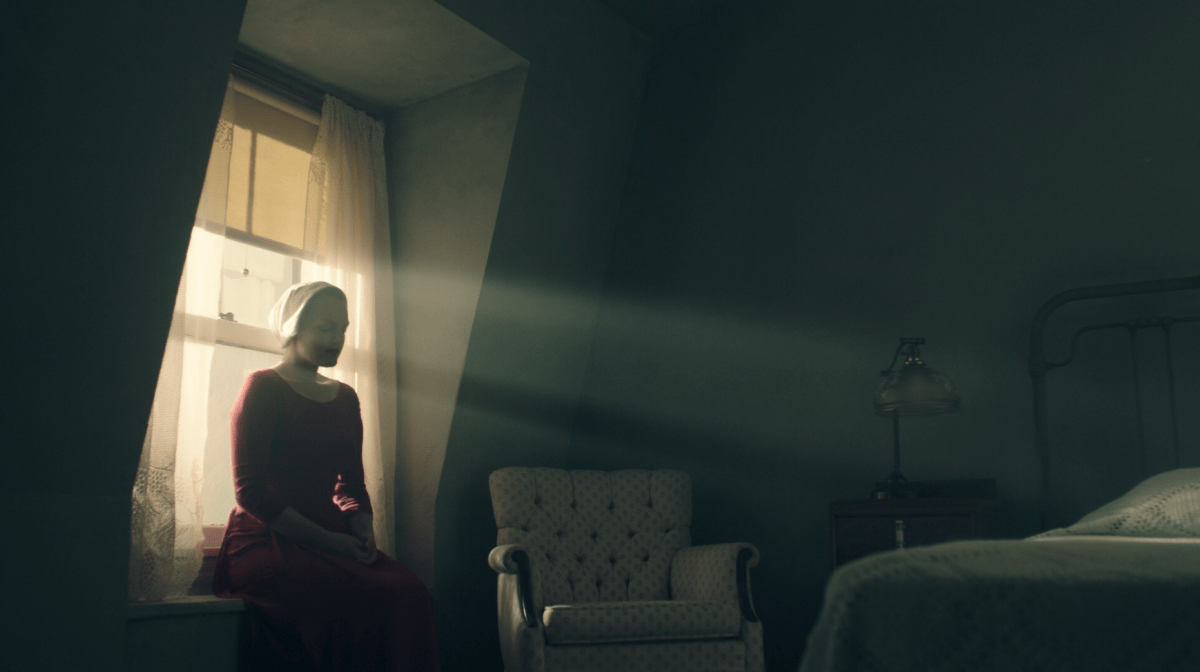The ambiguous “ending” of The Handmaid’s Tale show is the perfect note to wrap up June/Offred’s story with no nebulous epilogue of historical notes to assuage the viewers’ questions.
When it was revealed that a second season was greenlit—with the showrunner Bruce Miller hoping for more seasons—I reacted to the news with both trepidation and excitement. On one hand, what more can you unravel in June’s self-contained story? On the other hand, Margaret Atwood’s literary vision of the dystopic scope of Gilead does beg for further exploration.
When darkness descended upon June’s face, I was satisfied with not knowing more. Her visage drifts into darkness with no knowledge of whether she will see light again, but at the same time she has accepted peace in her display of momentary agency in Gilead. No additional seasons could be ordered and I would still find it complete. The thread stops here.
But if more stories are along the way, I feel it’s best to move on to exploring a different character within June’s universe. The prospect of another season is the showrunner’s opportunity to explore dynamics beyond the scope of a white woman’s window and perhaps switch to another anchor-point protagonist.
Turns out, June will remain the focal point, given the hints of Season Two’s contents. With June’s pregnancy, Elizabeth Moss suggests that Season Two will delve into June’s introspection on motherhood. However, Season One had gradually offered diversions from June’s point-of-view, distributing the narrative focus to Ofglen/Emily, Serena Joy, Nick, and Moira before reverting to June again.
If June is to resurface on-screen next season, I hope Season Two will allow space for more focal point characters and other survivors to gain equal footing in the overall story. After all, I never viewed June’s account as The Handmaid’s Tale. Rather, she told A Handmaid’s Tale, and a very vital one too.
But just as June had been in the foreground, these other characters, including those exclusive to the book so far, offer intriguing narrative doorways.
Character Jumping Points
- The Second Ofglen, whose name is still unknown to us. What makes her great is that she’s no traditional heroine. She is a bitter conformist, an obstructionist to June’s goals, and someone who didn’t fit the standard ideal rebel woman that June favors. The society before had failed her and Gilead stationed her in a “better life,” as she rationalizes, due to her experiences as a sex worker. Then she breaks down over the order to stone a fellow Handmaid. After she is dragged away by the police to her punishment, it’s easy to forget that Ofglen initiated the whole falling domino effect of defiance, and June was only the next domino that inspired the Handmaids to drop their stones. It’s easy to miss, but when the Handmaids gather their wing-bonnets to depart from the Salvaging scene, there’s one wing-bonnet left behind, presumably belonging to the woman we know as the current Ofglen, suggesting that she would have to pick up her bonnet and survive another day in Gilead.
- Rita. Such limited interaction occurred between June and Rita, yet it’s appropriate June instinctively entrusts her to preserve or pass along the secret bundle Handmaid testimonies instead of Nick. From the snips of Rita’s on-screen moments, despite her (supposed) loyalty to Gilead, she let slips some forbidden language. Considering that she lost a son to Gilead’s warfare, she has the empathetic competence to hold these stories of mothers’ grief in her hands.
- Offred’s mother in the book, who was a fascinating depiction of one angle of feminism and was sent to slave away in the Colonies. Showrunner Miller teased that her complicated relationship with June will be explored.
- Offred’s limited first-person scope in the original novel provided glimpses of the Econowives, who are lower on the caste totem pole of Gilead, playing the role of Wife, Handmaid, and Martha at once. The presence of Econowives have yet to be realized on screen.
- My personal curiosity: how Hannah Osbourne, the young daughter of the titular character, would cope with being forcibly integrated into Gilead’s doctrine under the tutelage of a Wife and Commander. Would Hannah become genuinely attached to her new adopted family while trying to remember her real parents in silence? How would Hannah’s Catholicism (which was briefly alluded) clash with the indoctrination of Gilead’s Christian ideals? How would a child process the strange color-coded caste system of women around her?
When Rita, the Martha servant, gathered the written testimonies, it’s a cliffhanger of the garden of stories, viewpoints, voices, beyond June Osbourne’s, waiting to be told. Like how June entrusted the letters to a background character with scarce screen-time, June should pass the torch to another woman.
(image: Hulu)
Caroline Cao is a Houstonian Earthling surviving under the fickle weather of Texas. When not angsting over her first poetry manuscript or a pilot screenplay about space samurais, she enjoys acting in cheesy improv performances for BETA Theater, experimenting with ramen noodles, and hollering vocal flash fics on Instagram. She lends her snarky/scholarly mouth to Birth Movies Death and The Script Lab.
Come visit her blog and check out her no-nonsense writing and screenwriting services. She’s also lurking in the shadows waiting for you to follow her on Twitter or Tumblr and read her Star Wars fanfiction.
Want more stories like this? Become a subscriber and support the site!
—The Mary Sue has a strict comment policy that forbids, but is not limited to, personal insults toward anyone, hate speech, and trolling.—









Published: Jun 15, 2017 03:37 pm